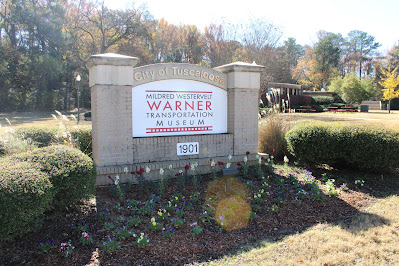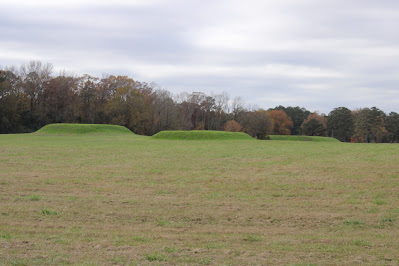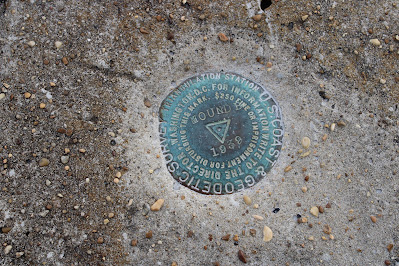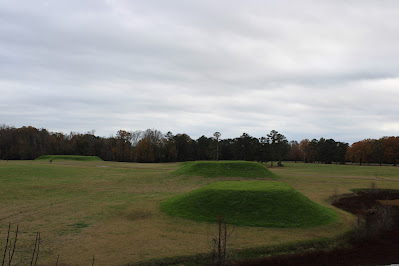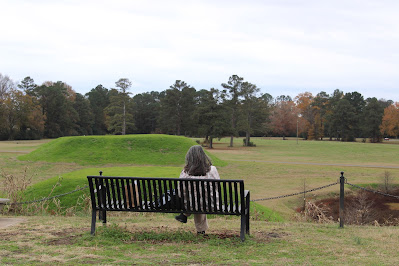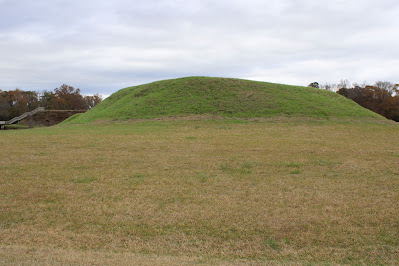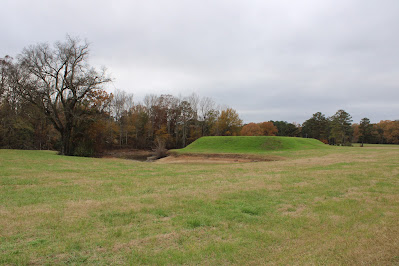Vacation to Alabama, Mississippi and Louisiana at 5 a.m. departure.
Arrived in Birmingham, Alabama and drove to the Moundville Archaeological Site, a Mississippian culture archaeological site on the Black Warrior River in Hale County, near the city of Tuscaloosa, Alabama. Extensive archaeological investigation has shown that the site was the political and ceremonial center of a regionally organized Mississippian culture chiefdom polity between the 11th and 16th centuries. The archaeological park portion of the site is administered by the University of Alabama Museums and encompasses 185 acres, consisting of 29 platform mounds around a rectangular plaza.
Engraved stone palette from Moundville
The site was declared a National Historic Landmark in 1964 and was added to the National Register of Historic Places in 1966.
Moundville is the second-largest site in the United States of the classic Middle Mississippian era, after Cahokia in Illinois. The culture was expressed in villages and chiefdoms throughout the central Mississippi River Valley, the lower Ohio River Valley, and most of the Mid-South area, including Kentucky, Tennessee, Alabama, and Mississippi as the core of the classic Mississippian culture area.
The site was occupied by Native Americans of the Mississippian culture from around 1000 AD to 1450 AD. Around 1150 AD the settlement's leaders began their rise from a local to a regional center, known as a chiefdom. At its height, the community took the form of a roughly 300-acre residential and political area, protected on three sides by a bastioned wooden palisade wall. The remaining side was protected by the river bluff.
The largest platform mounds were built on the northern edge of the plaza; they become increasingly smaller going either clockwise or counter clockwise around the plaza to the south. Scholars theorize that the highest-ranking clans occupied the large northern mounds, with the smaller mounds' supporting buildings used for residences, mortuary, and other purposes. A total of 29 mounds remain on the site.
Of the two largest mounds in the group, Mound A occupies a central position in the great plaza, and Mound B lies just to the north. It is a steep, 58 feet-tall pyramidal mound with two access ramps.
Archaeologists have also found evidence at the site of borrow pits, other public buildings, and a dozen small houses constructed of pole and thatch.
Archaeologists have interpreted this community plan as a sociogram, an architectural depiction of a social order based on ranked clans. According to this model, the Moundville community was segmented into a variety of different clan precincts, the ranked positions of which were represented in the size and arrangement of paired earthen mounds around the central plaza. By 1300, the site was being used more as a religious and political center than as a residential town. This signaled the beginning of a decline, and by 1500 most of the area was abandoned.
Moundville Archeology Site














